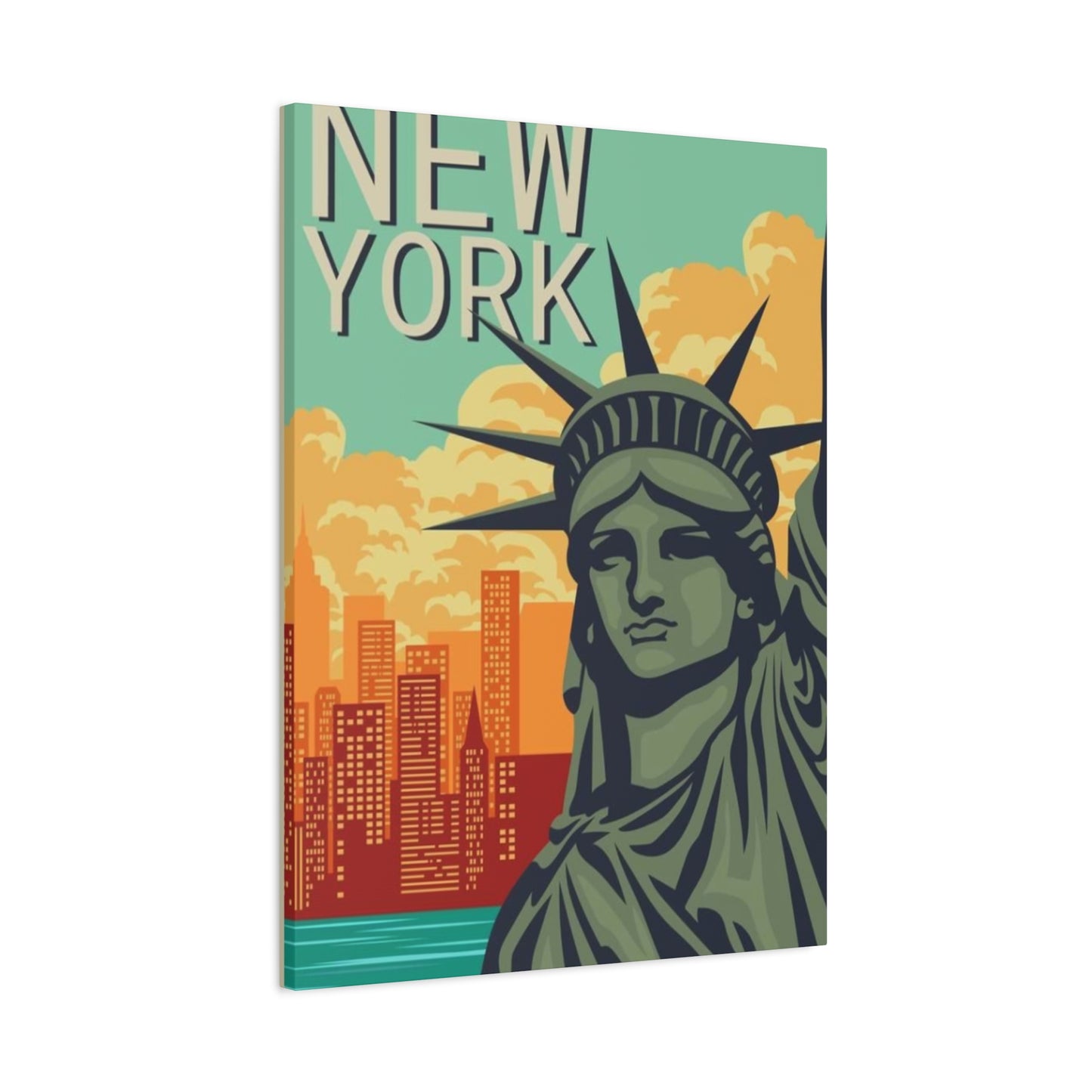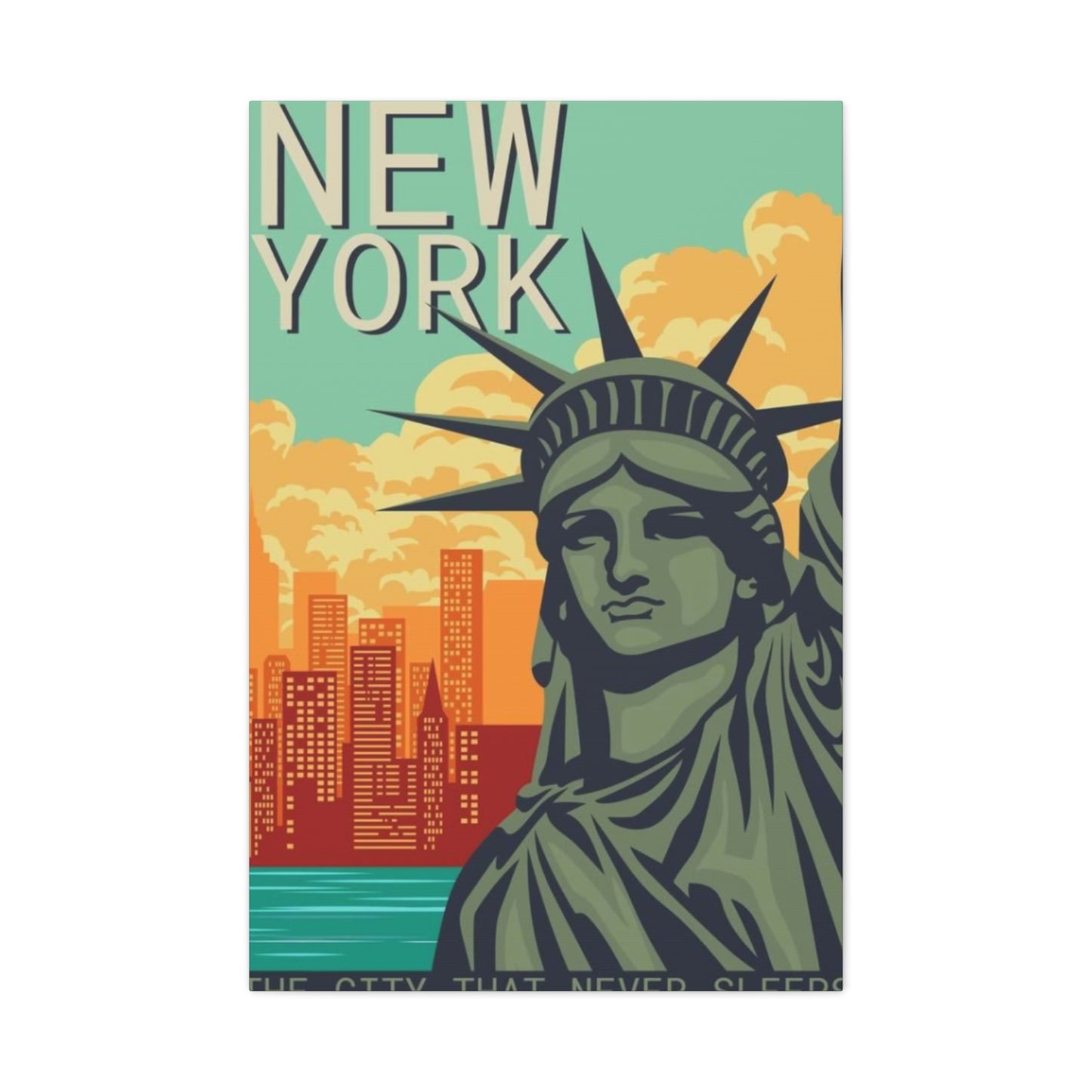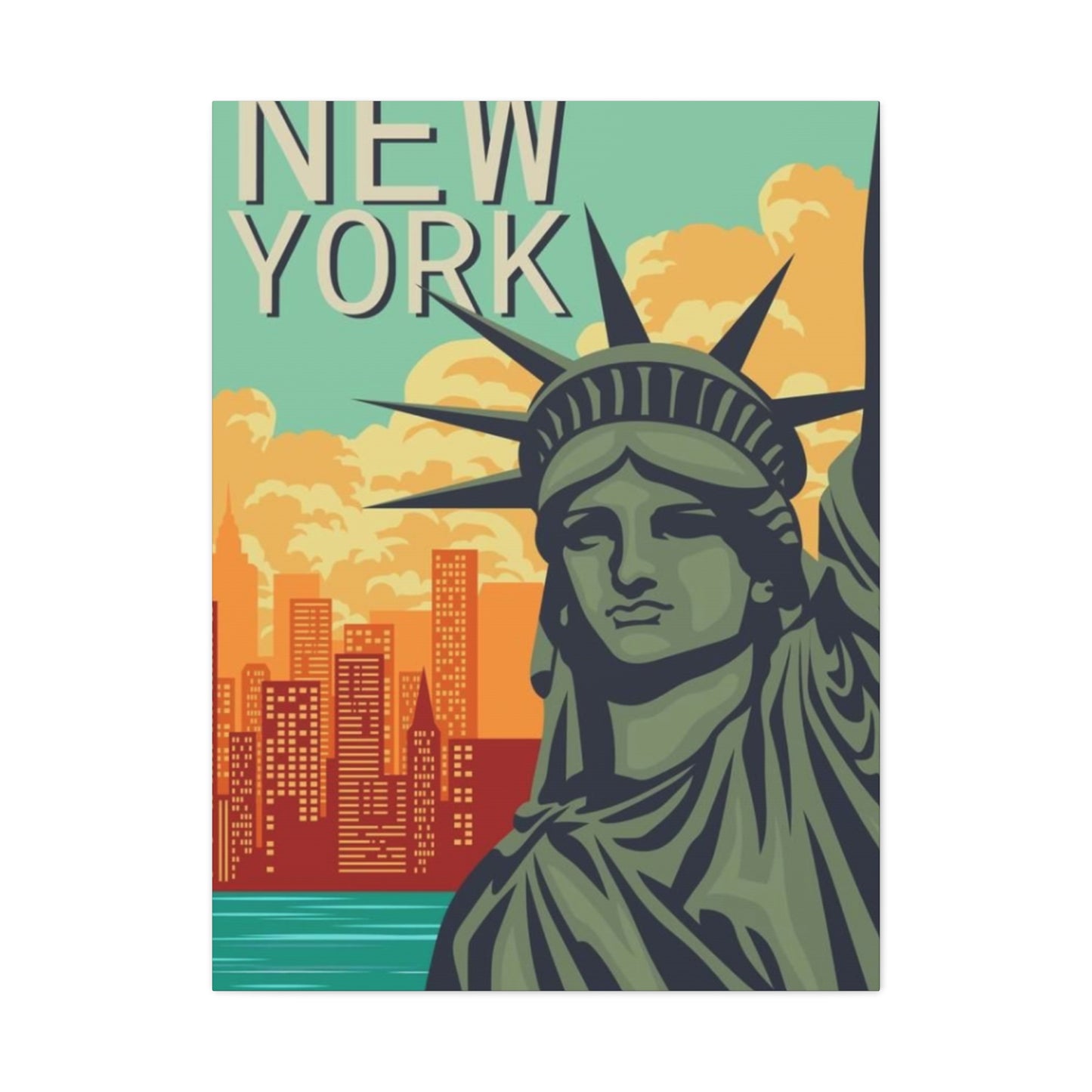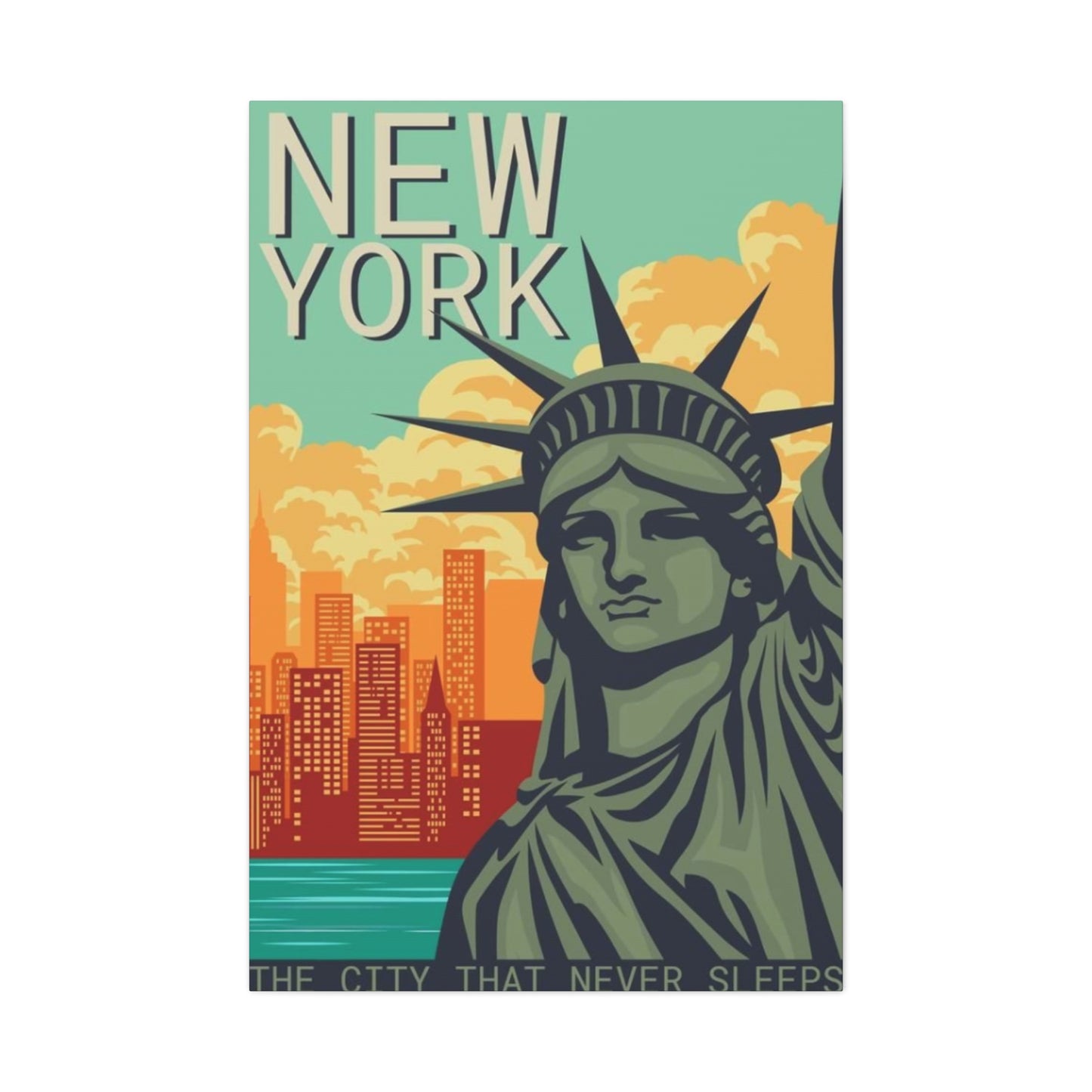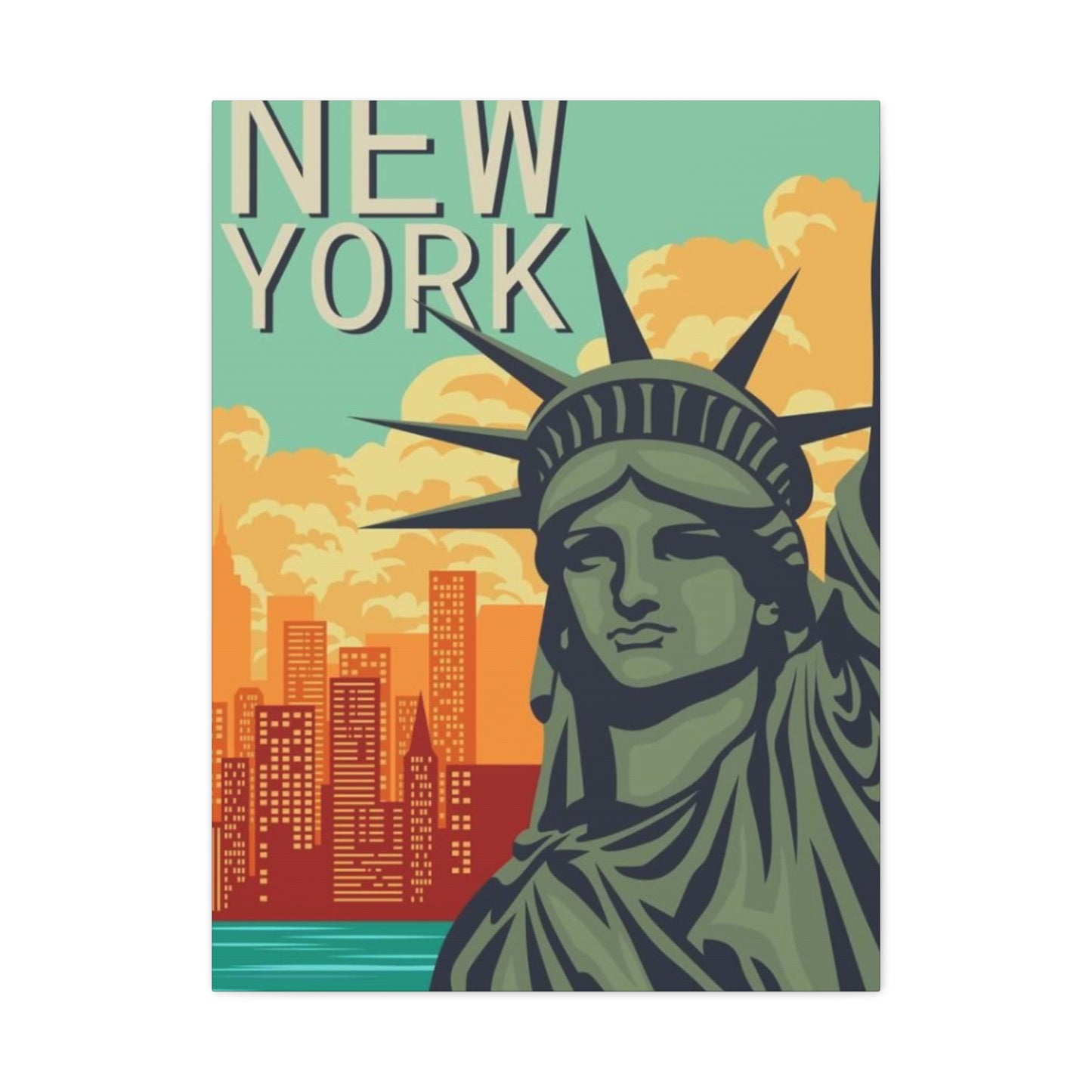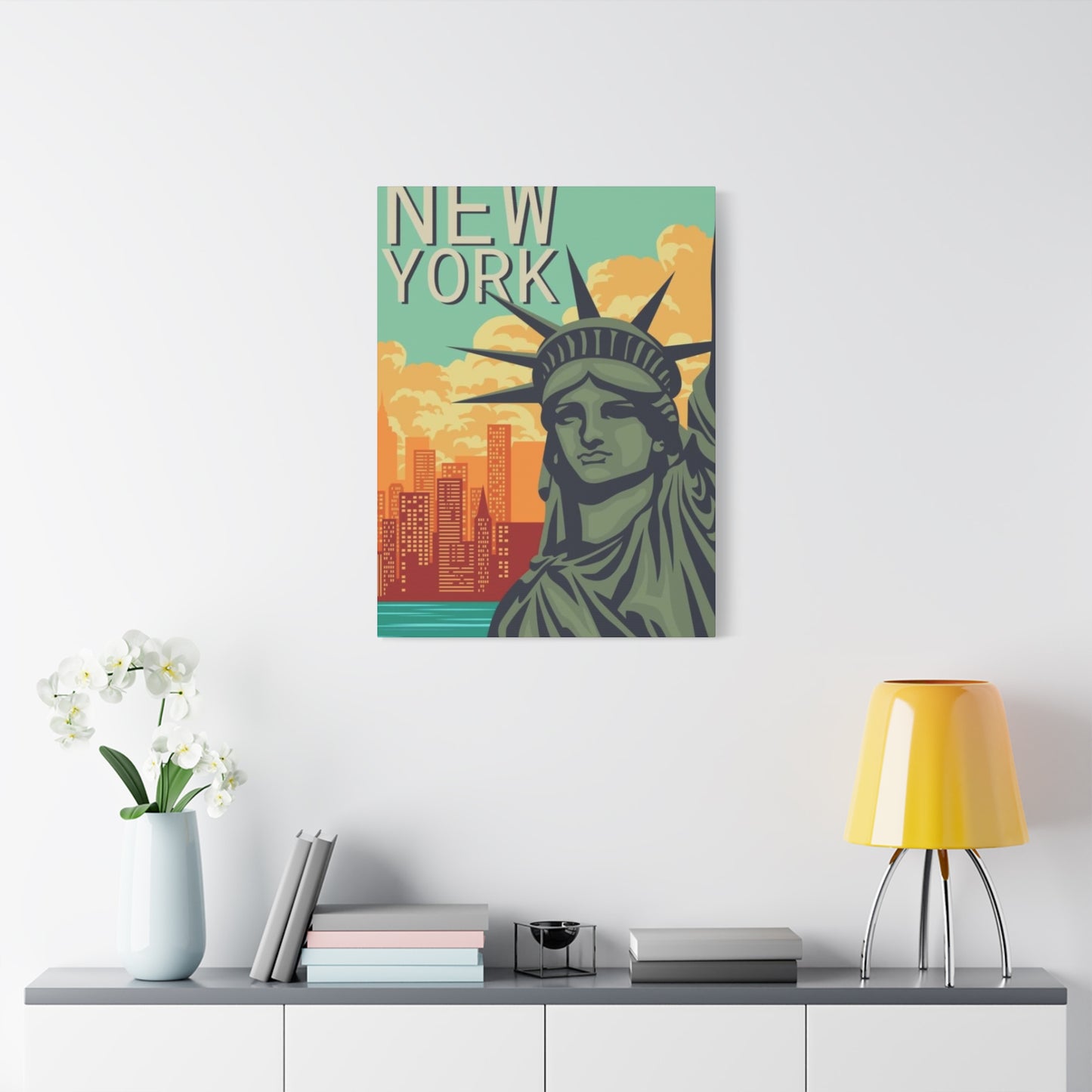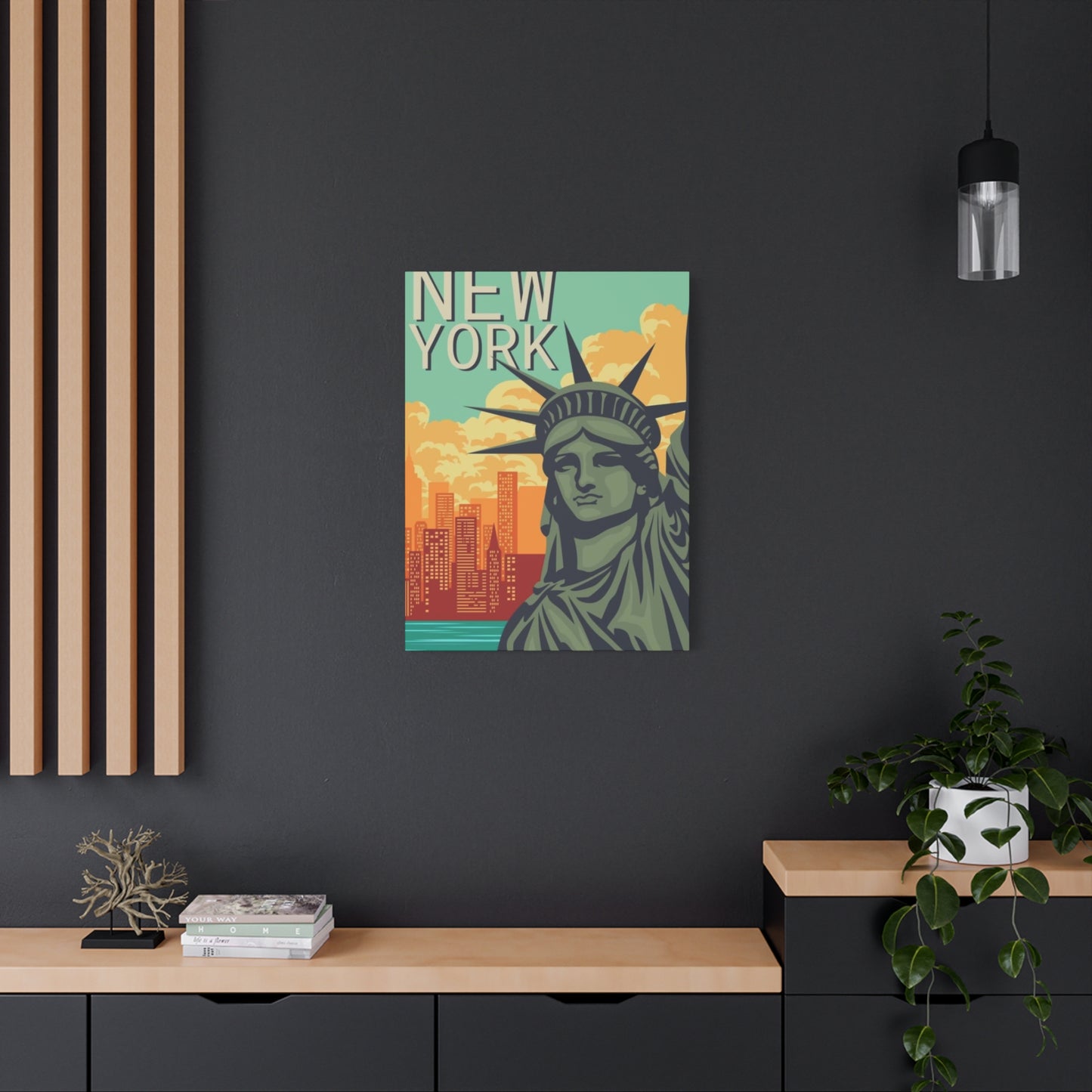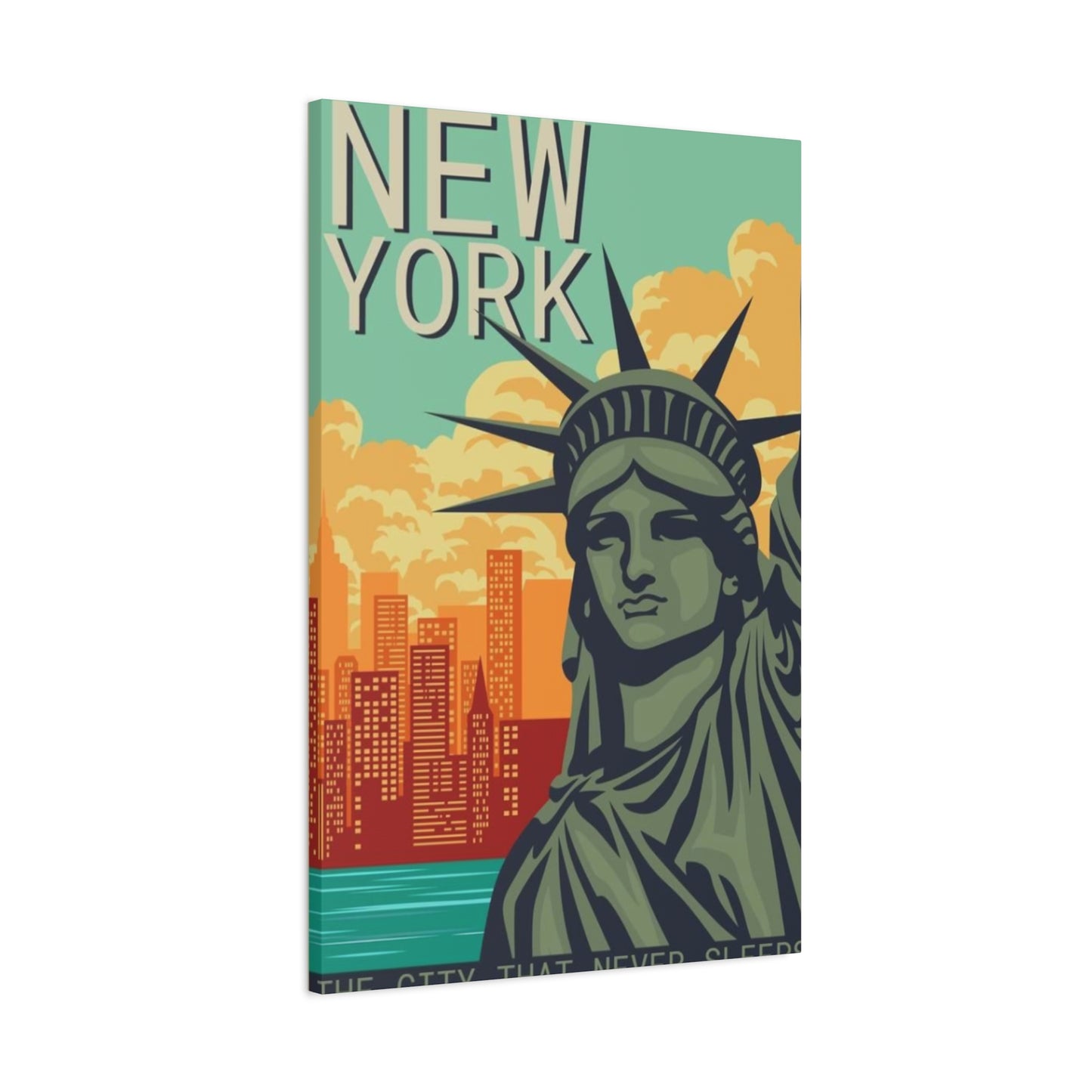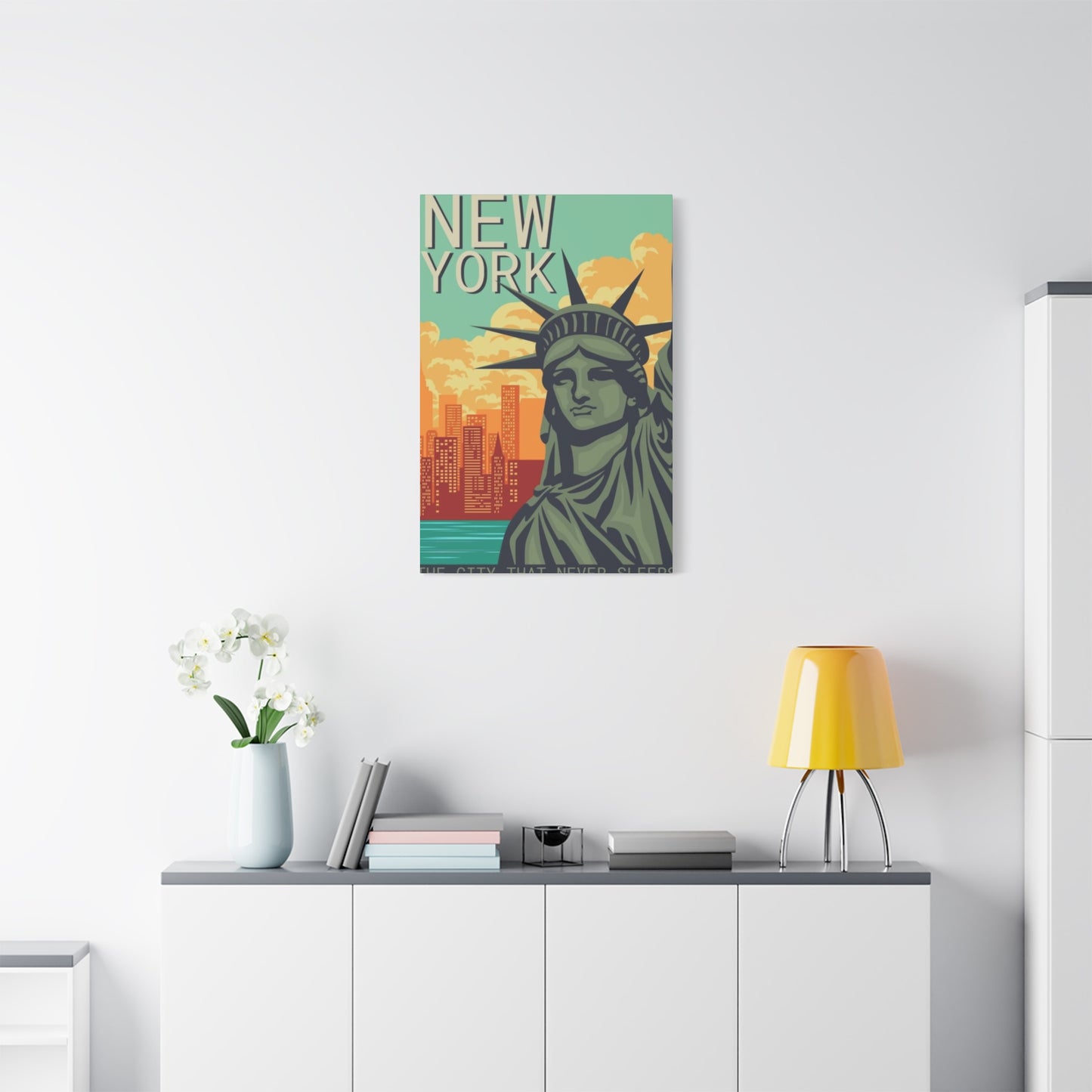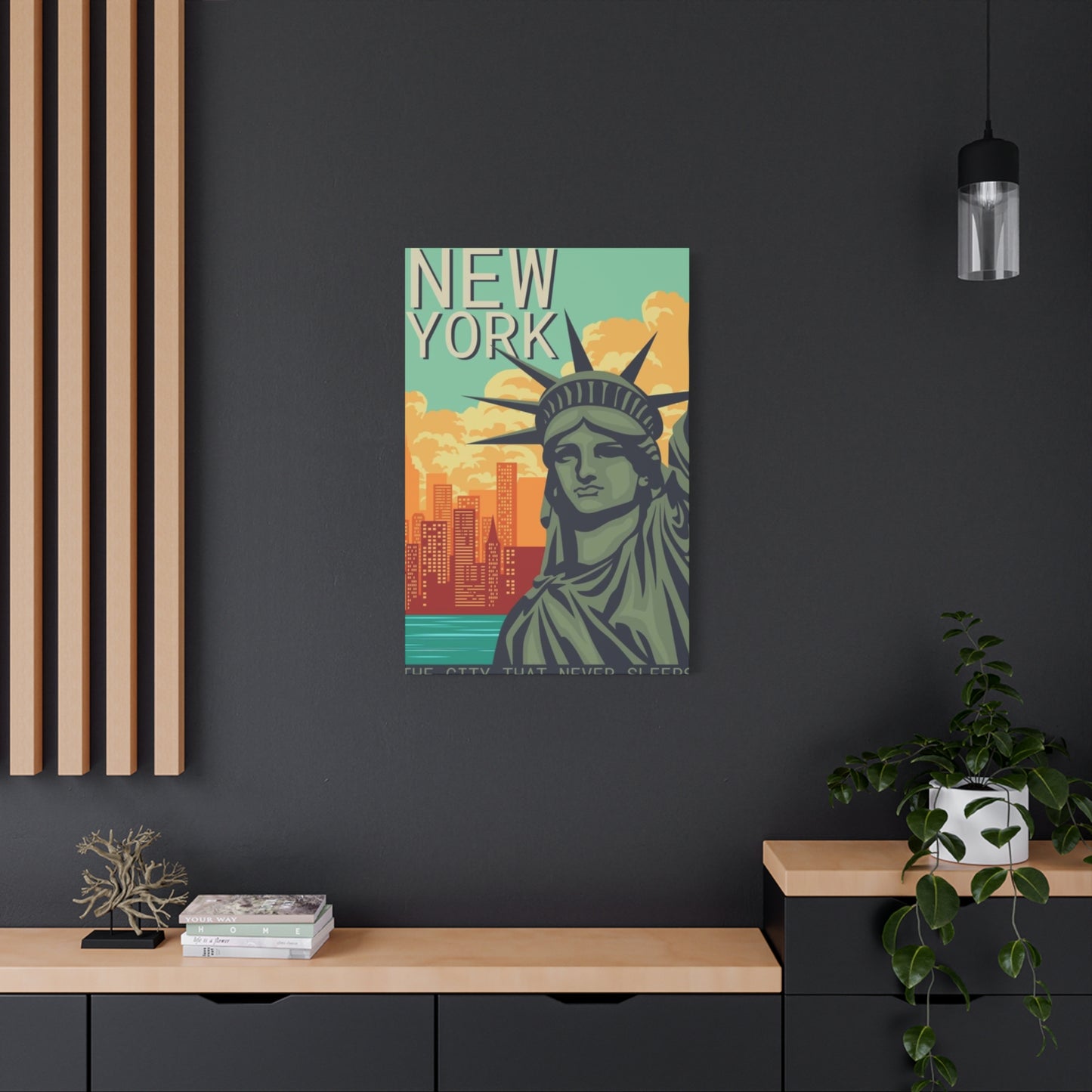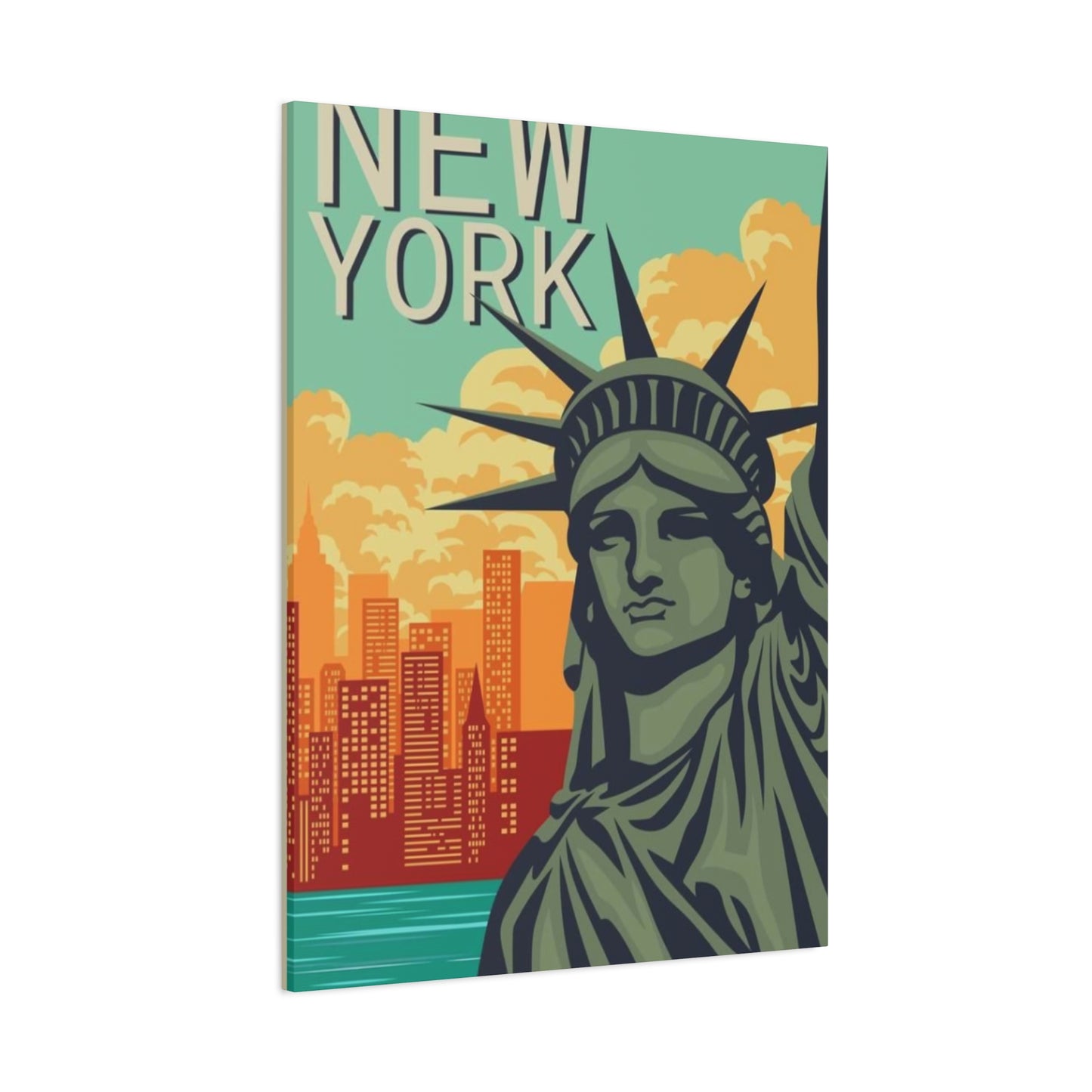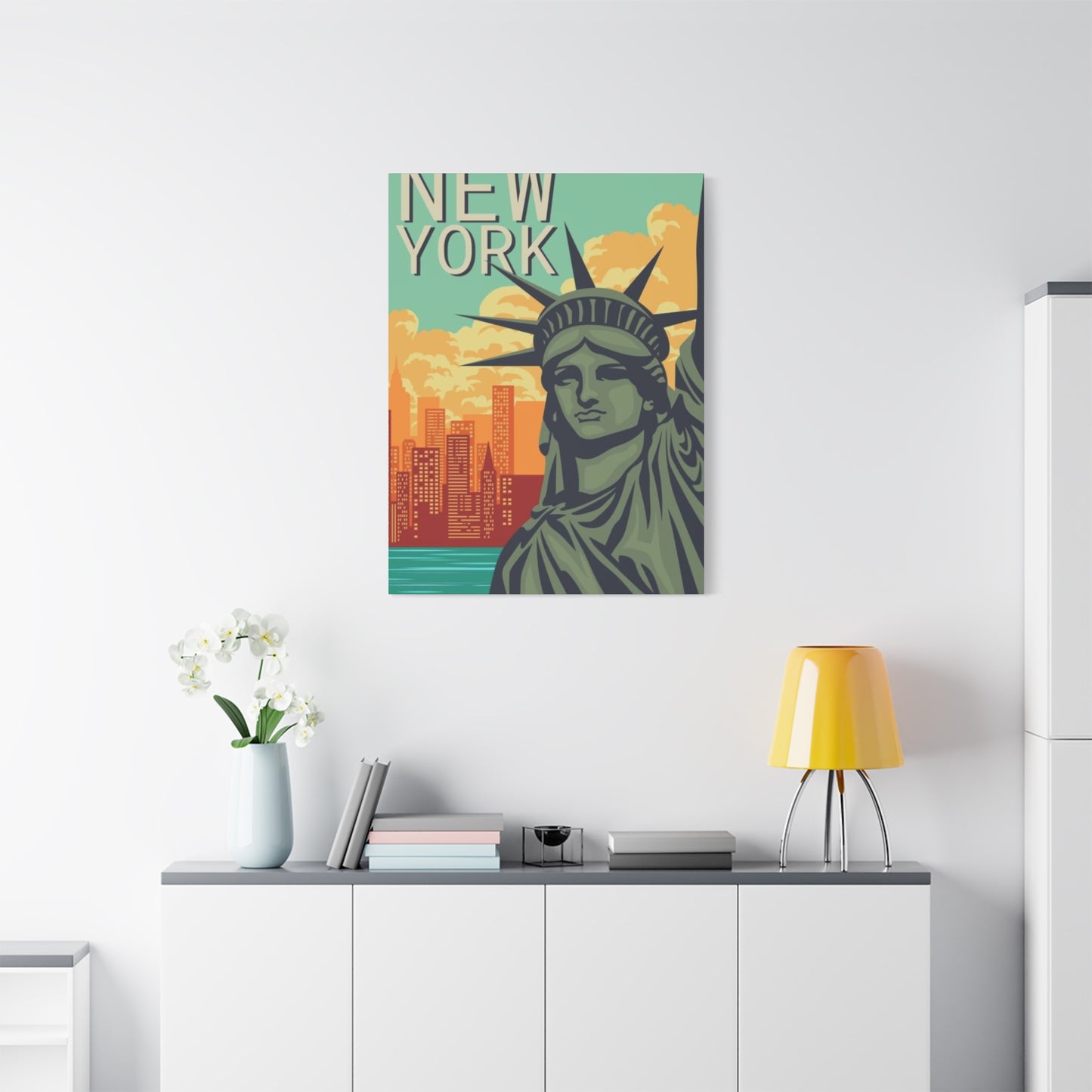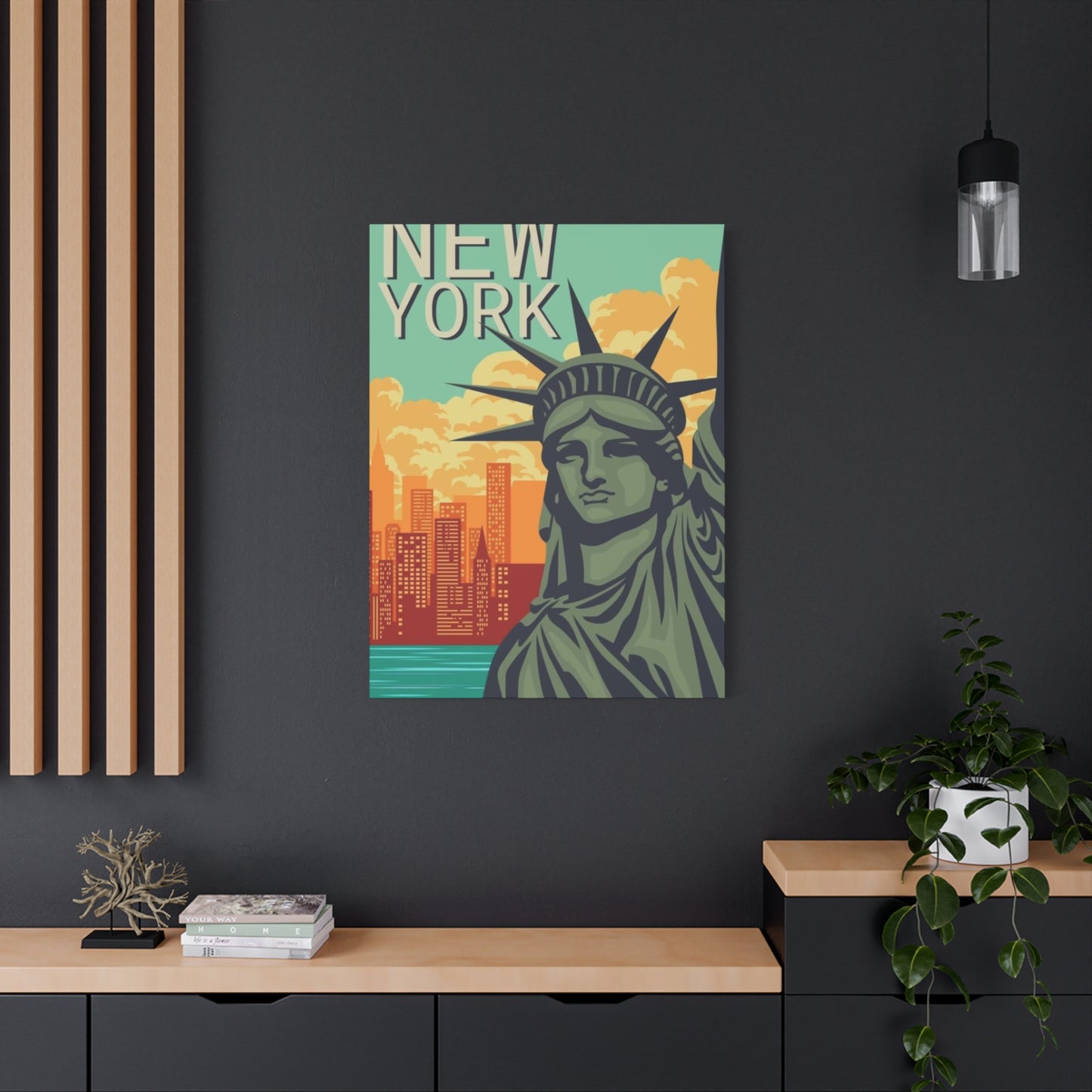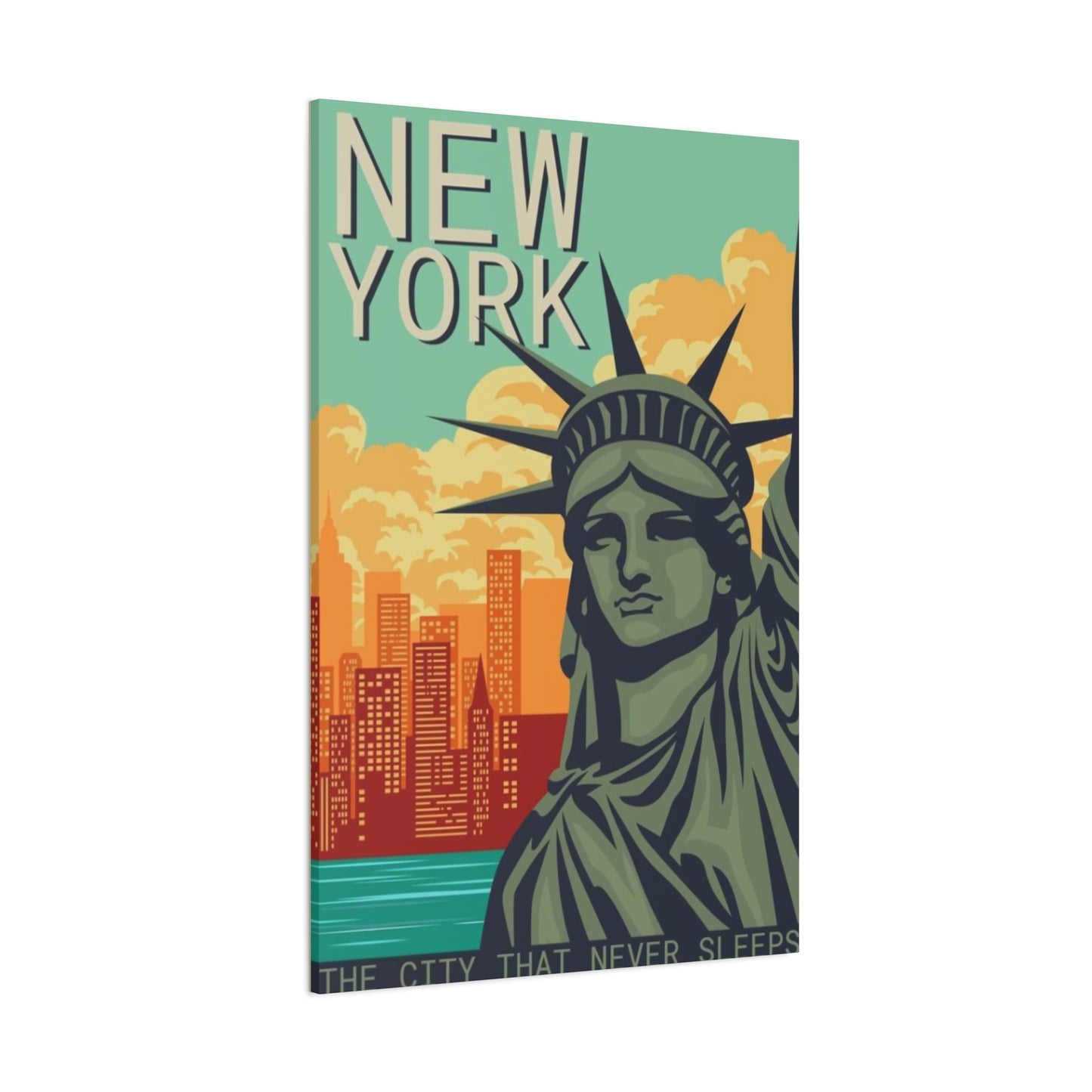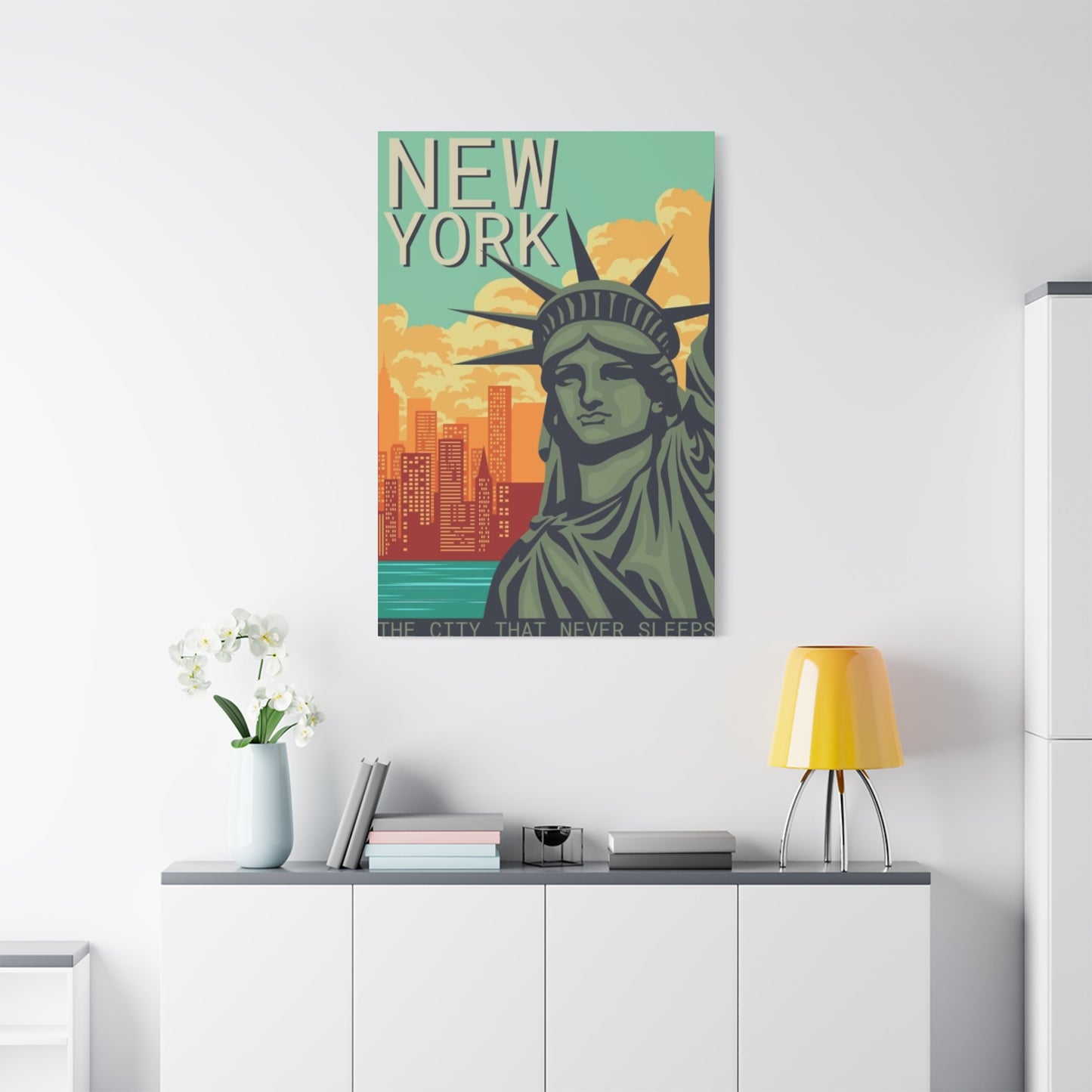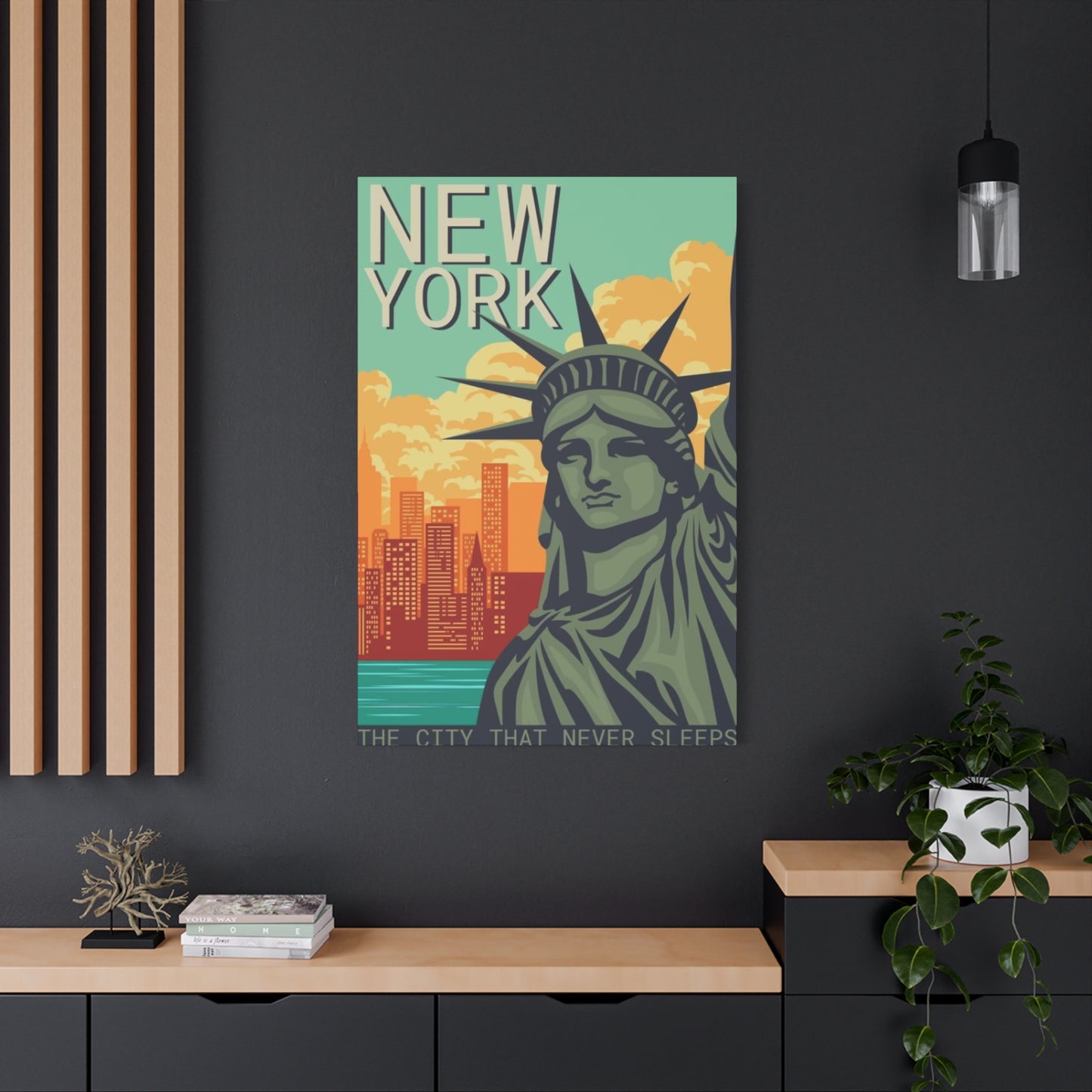Best Rooms to Showcase New York City Wall Art for Maximum Impact
The magnetism of New York City has captivated artists, dreamers, and creative souls for generations. This metropolis, with its towering structures, bustling streets, and unmistakable character, serves as an endless source of inspiration for visual artists worldwide. When you introduce paintings that showcase this remarkable city into your living spaces, you're not simply hanging decorative pieces on your walls. You're inviting the pulsating rhythm, the architectural magnificence, and the cultural richness of one of the world's most celebrated urban centers directly into your home environment.
New York City paintings represent far more than mere depictions of buildings and boulevards. They embody the essence of ambition, diversity, innovation, and the relentless forward momentum that defines this extraordinary place. Whether you find yourself drawn to abstract interpretations that play with color and form, realistic renderings that capture every architectural detail, or impressionistic approaches that convey mood and atmosphere, there exists a vast universe of artistic representations waiting to enhance your interior spaces. These artworks function as visual narratives, telling stories of the millions who have walked these streets, the countless dreams that have been pursued within these boundaries, and the perpetual transformation that characterizes this dynamic urban landscape.
The appeal of incorporating New York City paintings into your home or office extends beyond simple aesthetic enhancement. These pieces serve as conversation starters, memory preservers, and sources of daily inspiration. For those who have experienced the city firsthand, these artworks can transport them back to meaningful moments spent exploring neighborhoods, discovering hidden gems, or simply absorbing the incomparable energy that flows through every block. For others who dream of visiting or have developed a fascination with the city through films, literature, and photography, these paintings offer a tangible connection to a place that occupies such significant space in global consciousness.
Vibrant New York City Paintings for Your Walls
When considering artwork that depicts New York City, the range of available styles, perspectives, and artistic approaches can feel overwhelming in the most exciting way possible. The city itself offers such diverse visual material that artists have found countless ways to interpret and represent its character. From the glittering lights of Times Square to the serene pathways of Central Park, from the historic brownstones of Brooklyn to the sleek glass towers of Manhattan's financial district, every corner of this metropolis presents unique opportunities for artistic exploration.
Vibrant paintings that capture New York City's essence typically employ bold color palettes that mirror the intensity of urban life. Artists working in this style often use saturated hues, dramatic contrasts, and energetic brushwork to convey the sensory overload that characterizes the New York experience. These pieces might feature taxi cabs rendered in brilliant yellows that seem to glow against darker backgrounds, neon signs that splash pink and blue across canvas surfaces, or autumn foliage in Central Park depicted in fiery oranges and deep crimsons that celebrate the changing seasons.
The vibrancy in these paintings extends beyond color choices to encompass composition and technique as well. Many artists employ layering methods that create depth and complexity, mirroring the multilayered nature of city life itself. Textures might be built up through thick application of paint, creating surfaces that catch light and cast subtle shadows, adding dimensional interest to the work. Other artists might incorporate mixed media elements, combining traditional painting with collage, print-making techniques, or even digital components to create hybrid works that feel as contemporary and innovative as the city they represent.
For collectors and decorators seeking to introduce these vibrant pieces into their spaces, consideration of scale becomes particularly important. Large-scale paintings can serve as dramatic focal points, commanding attention and setting the tone for entire rooms. These substantial pieces work exceptionally well in spaces with high ceilings or expansive wall areas where their impact can be fully appreciated. Alternatively, creating gallery walls with multiple smaller vibrant pieces allows for dynamic arrangements that can be adjusted and personalized over time, telling more complex visual stories through the combination of different perspectives and styles.
The placement of vibrant New York City paintings requires thoughtful consideration of existing design elements within your space. These bold artworks often work best when given room to breathe, positioned where they won't compete with overly busy patterns or conflicting color schemes. In more minimalist or neutral interiors, a vibrant New York painting can inject personality and energy, becoming the element that brings the entire space to life. In already colorful environments, selecting pieces that complement or thoughtfully contrast with existing hues creates cohesive yet dynamic visual experiences.
Lighting plays a crucial role in showcasing vibrant paintings effectively. Natural light can bring out the luminosity in certain colors while potentially fading others over time, so positioning becomes a balance between display and preservation. Artificial lighting, particularly track lighting or picture lights, can be adjusted to highlight specific areas of paintings, drawing attention to particular elements while creating dramatic effects that enhance the viewing experience, especially during evening hours when the artificial lighting can echo the illuminated quality of the city at night.
Capture NYC's Energy with Stunning Paintings
The energy of New York City represents something intangible yet unmistakable, a quality that residents and visitors alike recognize immediately upon arrival. This energy manifests in the constant motion of people moving through subway stations, the symphony of sounds that creates the city's distinctive soundtrack, the ambitious spirit that drives innovation across industries, and the cultural dynamism that makes New York a global center for arts, finance, fashion, and countless other fields. Capturing this energy in static, two-dimensional paintings presents artists with a fascinating challenge that has inspired countless creative solutions.
Artists attempting to translate New York's kinetic energy into painted form employ various techniques and approaches. Some focus on depicting movement itself through blurred figures rushing through crosswalks, streaking taxi headlights captured in long exposure photography-inspired paintings, or dynamic compositions where diagonal lines and off-balance arrangements create visual tension that suggests motion even in stillness. Others concentrate on capturing moments of peak activity when the city's energy reaches particularly intense levels, such as the crush of commuters during rush hour, the revelry of New Year's Eve in Times Square, or the organized chaos of a street festival in full swing.
Color temperature and intensity play significant roles in conveying energy through painted works. Warm colors like reds, oranges, and yellows naturally suggest heat, passion, and activity, while cooler blues and greens might represent the brief respites of calm found in parks or quiet early morning moments before the city fully awakens. Many effective paintings that capture New York's energy employ dramatic contrasts between warm and cool tones, creating visual vibrations that keep the viewer's eye moving across the canvas, never quite settling, much like the experience of being in the city itself.
The scale and pace of brushwork contribute substantially to the energetic quality of paintings. Loose, gestural marks made with confidence and speed can convey spontaneity and vitality, suggesting the improvisational nature of city life where plans constantly adapt to changing circumstances. Conversely, some artists capture energy through meticulous detail that reveals the incredible complexity and density of urban environments, where every window represents a different story, every storefront a different enterprise, and every passing face a unique individual journey.
Contemporary artists have expanded the possibilities for capturing urban energy by incorporating unconventional materials and techniques into their practice. Some create mixed media works that include actual fragments of city life such as newspaper clippings, subway tickets, or street posters, physically embedding pieces of New York into the artwork itself. Others experiment with dimensional elements that extend beyond the flat picture plane, creating relief effects or sculptural components that cast real shadows and occupy physical space in ways that challenge traditional painting definitions.
The energy represented in these paintings often reflects specific aspects of New York life that resonate with different viewers. For some, the appeal lies in depictions of commercial vitality, the bustle of shopping districts, the illuminated storefronts, and the constant transaction of goods and services that keeps the economic engine running. Others connect more deeply with representations of cultural energy, paintings that show gallery openings, theater districts, jazz clubs, or street performances that speak to the city's role as an artistic and creative hub. Still others are drawn to images that capture social energy, the diverse humanity that fills sidewalks, parks, and public transportation, representing the multicultural tapestry that defines modern New York.
Bring the Big Apple Home Through Art
The concept of bringing New York City into your personal living space through art carries both literal and symbolic dimensions. On the most straightforward level, hanging a painting of New York landmarks or scenes allows you to enjoy visual reminders of the city regardless of your actual physical location. For former residents who have relocated elsewhere, these artworks can serve as nostalgic touchstones that maintain emotional connections to a place that shaped significant portions of their lives. For current residents, these pieces can celebrate the city they call home, highlighting aspects of urban life they particularly cherish or providing fresh perspectives on familiar sights they might otherwise take for granted.
The symbolic dimension of bringing New York home through art relates to the values, attitudes, and cultural associations that the city represents. New York stands as a symbol of possibility, where reinvention is not just possible but expected, where diversity is not merely tolerated but celebrated as essential to the city's identity. By choosing to display art that references this particular place, you're making a statement about what matters to you, signaling to visitors that you appreciate urban sophistication, cultural diversity, artistic innovation, or perhaps simply the particular aesthetic that New York imagery provides.
Selecting paintings that truly bring New York into your space involves considering which aspects of the city resonate most powerfully with your personal experience or aspirations. Some individuals gravitate toward iconic landmarks that function as visual shorthand for the city itself. The Statue of Liberty, Empire State Building, Brooklyn Bridge, or Central Park are recognized globally and carry rich symbolic weight beyond their physical presence. Paintings featuring these landmarks tap into collective cultural memory and shared human experiences, creating immediate recognition and emotional response.
Others prefer artwork that captures lesser-known neighborhoods or specific locations that hold personal significance. Perhaps you lived on a particular block in the East Village, got engaged in a specific restaurant in Little Italy, or spent transformative years studying near Washington Square Park. Commissioning or discovering paintings that depict these personally meaningful locations creates deeply individual connections between your space and the artwork within it. These pieces tell your story in ways that generic landmark images cannot, functioning as visual autobiography rather than general decoration.
The style of painting you choose to bring New York into your home also communicates something about your aesthetic preferences and personality. Photorealistic paintings demonstrate appreciation for technical skill and precise observation, offering detailed views that reward close examination. Abstract works suggest comfort with ambiguity and interpretation, allowing viewers to project their own meanings and associations onto forms and colors that suggest rather than explicitly depict. Impressionistic or expressionistic paintings indicate valuing mood and emotion over literal accuracy, prioritizing the feeling of New York over documentary representation.
Size considerations when bringing New York home through art impact both practical display possibilities and psychological effect. Large paintings create immersive experiences, particularly when featuring sweeping cityscapes or panoramic views that can make viewers feel transported into the scene itself. These substantial pieces work particularly well in main living areas where they can serve as primary design anchors around which other furnishings and decorative elements are arranged. Smaller paintings offer flexibility, working well in intimate spaces like bedrooms or home offices, or grouped together to create curated collections that tell more complex visual stories through multiple perspectives and styles.
Colorful and Bold New York City Wall Art
Color serves as one of the most powerful tools artists employ when creating New York City paintings, and many contemporary works embrace bold, saturated palettes that push beyond naturalistic representation into more expressive and emotional territories. These colorful interpretations of the city reflect both the actual chromatic intensity found in many urban environments and the heightened emotional experiences that city life often provokes. From the multicolored chaos of Times Square to the golden hour glow that sometimes bathes buildings in warm light, from the deep blues of twilight descending over the Hudson River to the vibrant greens of summer foliage in Central Park, the city provides endless color inspiration.
Bold artistic choices regarding color can transform familiar New York scenes into fresh visual experiences. An artist might render the Chrysler Building in unexpected purples and magentas rather than its actual metallic tones, or depict a typical gray rainy day in a palette dominated by warm ochres and siennas. These departures from literal color accuracy serve artistic purposes beyond mere decoration. They can emphasize emotional content, with color choices reflecting feelings about the city rather than its physical appearance. They can also create visual impact that helps artwork command attention in contemporary interiors where competition for notice comes from numerous sources including screens, patterns, and other decorative elements.
The boldness in New York City wall art often extends beyond color to encompass composition, scale, and conceptual approach. Artists working in bold styles might employ unusual perspectives like extreme angles looking up at towering buildings, aerial views that flatten the urban landscape into geometric abstractions, or cropped compositions that show only fragments of larger scenes, forcing viewers to complete the image mentally. These compositional choices create visual tension and interest, preventing paintings from settling into comfortable prettiness and instead maintaining an edge that mirrors the city's own refusal to be entirely comfortable or complacent.
Texture represents another dimension where boldness manifests in New York City paintings. Heavy impasto techniques where paint is applied thickly create surfaces that catch and reflect light in constantly changing ways as viewers move past or as lighting conditions shift throughout the day. Some artists build up surfaces so substantially that their paintings become low-relief sculptures, with elements like building facades or tree branches extending outward from the picture plane. Others might incorporate unconventional materials like sand, plaster, or fabric into painted surfaces, creating rich textural variety that invites both visual and tactile engagement.
The boldness of contemporary New York City wall art also appears in how artists choose to represent or abstract their subjects. While some maintain recognizable imagery of streets, buildings, and landmarks, others fragment and reassemble these elements in ways influenced by cubism, futurism, or other modernist movements. Buildings might be shown simultaneously from multiple viewpoints, streets might curve and twist in physically impossible ways, or the entire city might be compressed into dense, semi-abstract compositions where individual elements blur together into overall impressions of urban density and complexity.
For collectors and decorators, incorporating colorful and bold New York City wall art into spaces requires confidence and commitment. These pieces typically don't fade quietly into backgrounds but instead assert themselves prominently, demanding attention and setting aesthetic tone. This assertiveness makes them ideal for spaces where making strong design statements is desirable, such as contemporary lofts, creative studios, or modern office environments where conventional, safe decoration would feel out of place. The key to successful integration involves ensuring that the boldness of the artwork is supported rather than contradicted by surrounding design choices, whether through complementary furnishings or through deliberate contrast that highlights the artwork's distinctive qualities.
Express the Spirit of NYC in Your Space
The spirit of New York City encompasses far more than its physical attributes or visual appearance. This spirit includes the legendary determination and resilience of New Yorkers, the entrepreneurial energy that drives constant innovation, the cultural sophistication that comes from centuries of immigration and artistic achievement, and the complicated relationship between individual ambition and collective community that plays out across millions of daily interactions. Expressing this multifaceted spirit through paintings requires artists to go beyond surface-level representation and tap into deeper essences that define what New York truly means.
One aspect of New York's spirit that frequently appears in paintings is the vertical ambition literally embodied in its skyline. The drive to build higher, reach further, and surpass previous achievements manifests physically in the city's architecture, with each generation adding new towers that redefine the silhouette. Paintings that emphasize verticality, that show buildings stretching toward sky, or that use dramatic upward perspectives can capture this aspirational dimension of the city's character. These works remind viewers that New York has always been a place where people come to exceed their previous limitations, to become larger versions of themselves, to achieve what might have seemed impossible elsewhere.
Another essential element of New York's spirit is its diversity and the creative friction that results when people from dramatically different backgrounds share limited space and must negotiate coexistence. Paintings that show the density of human activity, the variety of architectural styles, or the layering of different historical periods visible in the built environment can express this multicultural, multi-temporal quality that makes New York so distinctive. Some artists explicitly address diversity through their choice of subjects, depicting neighborhood street scenes where different cultures visibly intersect, or showing public spaces like subway cars where New York's extraordinary human variety becomes most apparent.
The resilience and toughness that form part of New York's mythic identity also find expression in paintings, though often in subtle ways. Artists might depict weather-beaten buildings that have survived decades or centuries of use, street corners that show evidence of constant wear and repair, or scenes that capture the city continuing its routines despite challenges. Historical artworks addressing events like the Great Depression, 9/11, or various economic downturns document how the city has faced and overcome adversity, while contemporary works often embody resilience simply through their insistence on finding beauty, meaning, and vitality in urban environments that can sometimes feel overwhelming or harsh.
The creative and artistic spirit that has made New York a global cultural capital for generations provides endless subject matter for painters. Some create meta-artistic works that show other artists at work in studios, street performers entertaining crowds, galleries and museums hosting exhibitions, or audiences enjoying theatrical performances. Others channel the city's creative energy into their own innovative approaches, experimenting with techniques, styles, and concepts that push boundaries in ways that parallel New York's own constant reinvention and refusal to remain static.
Nighttime paintings of New York often capture a particular aspect of its spirit as the city that never sleeps, where activity continues around the clock and where darkness doesn't signal shutdown but rather a shift in mood and activity. These nocturnal scenes, with their interplay of artificial light and shadow, their glimpses into illuminated windows, their depiction of late-night restaurants and bars still serving customers, express the restless, perpetual energy that defines New York perhaps more than any daytime scene could. The glow of millions of lights reflected on wet pavement after rain, the streams of traffic continuing through small hours, the sense of countless separate dramas unfolding simultaneously all speak to the inexhaustible vitality that characterizes this remarkable place.
Iconic Landmarks in Beautiful Paintings
New York City's collection of iconic landmarks has provided inspiration for artists since these structures first appeared on the skyline. The Statue of Liberty, perhaps the most globally recognized symbol of America itself, has been painted in countless styles and contexts, from realistic portrayals that emphasize its neoclassical beauty and massive scale to abstract interpretations that reduce it to essential forms and symbolic significance. The statue functions simultaneously as sculpture, symbol, and architectural achievement, offering artists rich material for exploration regardless of their preferred style or approach.
The Brooklyn Bridge, completed in 1883, represents another landmark that has captivated painters for well over a century. This engineering marvel combines Gothic-inspired stone towers with revolutionary suspended steel cable design, creating a structure that is both functionally impressive and aesthetically beautiful. Paintings of the Brooklyn Bridge might emphasize its graceful cables creating geometric patterns against sky, its stone towers rendered in golden hour light, or views through its pedestrian walkway looking toward Manhattan's skyline. Some artists depict the bridge from a distance, showing how it connects two boroughs across the East River, while others focus on details like the cable patterns or the play of light and shadow within its structure.
The Empire State Building, for decades the world's tallest structure and still among Manhattan's most distinctive skyscrapers, offers artists opportunities to explore themes of ambition, Art Deco elegance, and vertical aspiration. Paintings might show the building dominating the skyline when viewed from various vantage points, capture the colored lights that illuminate its upper floors during special occasions, or focus on architectural details that reveal the craftsmanship of its 1930s construction. The building's strong vertical lines and setback design create compelling compositional elements that artists can emphasize or play against in their works.
Central Park, that remarkable 843-acre green space in the heart of Manhattan, provides endless subject matter for painters drawn to natural beauty within urban contexts. Artists might depict the park's designed landscapes that appear natural but are actually carefully planned and maintained, show seasonal changes that transform the same locations dramatically throughout the year, or capture the human activity that fills the park on pleasant days when New Yorkers seek respite from concrete and steel. Paintings of Central Park can range from sweeping panoramas that show the park's relationship to surrounding buildings to intimate scenes of specific features like Bow Bridge, Bethesda Fountain, or the Ramble's winding paths.
Times Square represents perhaps the most challenging iconic location to capture in paintings due to its visual complexity and constant change. This intersection, filled with enormous digital advertisements, crowds of tourists and workers, vehicles of all types, and constant activity, embodies sensory overload in ways that can be difficult to translate into static painted images. Yet artists who successfully capture Times Square's essence create works of remarkable energy, often employing techniques like multiple exposures, layered imagery, or abstracted forms to convey the overwhelming visual experience of actually standing in this location where commercial spectacle reaches its peak intensity.
Lesser-known but equally beloved landmarks like the Flatiron Building, Grand Central Terminal, the New York Public Library, or the Charging Bull sculpture in the Financial District each offers distinct visual and symbolic possibilities. The triangular Flatiron Building creates unusual compositional opportunities due to its unique shape. Grand Central's celestial ceiling and dramatic interior spaces provide subject matter quite different from exterior cityscapes. The library's Beaux-Arts architecture and famous lion statues speak to education and civic pride. Each landmark carries its own stories, associations, and visual characteristics that artists can interpret according to their individual sensibilities and technical approaches.
Artistic Views of New York's Skyline
The New York skyline, particularly Manhattan's famous silhouette when viewed from across water or from elevated vantage points, functions as one of the most recognizable urban profiles in the world. Artists approaching this subject face the challenge of depicting something so frequently photographed and reproduced that creating fresh perspectives requires considerable innovation and artistic vision. Yet the skyline continues to inspire painters because it embodies so many aspects of human ambition, architectural achievement, and urban development condensed into a single, continuously evolving composition.
Artists painting New York's skyline must make numerous decisions that dramatically affect their final works. Choosing the viewpoint from which to depict the skyline establishes the painting's entire structure and emphasis. Classic views from New Jersey across the Hudson River show the western face of Manhattan with its cluster of skyscrapers rising dramatically from the water's edge. Views from Brooklyn across the East River, particularly from areas near the Brooklyn Bridge or from elevated locations in Brooklyn Heights, offer different perspectives that include the bridge itself and emphasize the downtown financial district's towers. Aerial viewpoints, whether from actual helicopter perspectives or imagined bird's-eye positions, flatten the three-dimensional city into dense geometric patterns that emphasize the urban grid and building density.
Time of day significantly impacts skyline paintings, with different lighting conditions creating dramatically different moods and visual effects. Dawn paintings might show buildings silhouetted against colorful eastern skies with their western faces still in shadow. Midday scenes offer clear visibility of architectural details and colors but can lack the drama of more extreme lighting conditions. Late afternoon and sunset provide opportunities to paint buildings bathed in warm golden light, with glass facades reflecting intense oranges and pinks. Nighttime skyline paintings show the city transformed into a constellation of lights, with illuminated windows creating patterns across dark building masses and iconic structures like the Empire State Building glowing in colored floodlight.
Seasonal variations provide yet another set of possibilities for skyline paintings. Winter scenes might include snow-covered rooftops and bare trees in foreground parks, with crisp clear air making distant buildings appear sharp and detailed. Spring and summer paintings can incorporate green foliage from parks and trees softening the hard edges of architecture. Autumn offers possibilities for including colorful leaves in foregrounds or showing the golden light particular to fall in northern latitudes. Weather conditions beyond seasonal norms including fog, rain, or dramatic cloud formations can transform familiar skylines into moody, atmospheric compositions where buildings appear and disappear in mist or where storm clouds gather dramatically above human constructions.
The level of detail artists choose to include in skyline paintings ranges from photorealistic precision that attempts to capture every window and architectural feature to abstracted simplifications that reduce buildings to geometric forms and color masses. Detailed approaches reward close viewing and can create almost trompe-l'oeil effects where paintings initially appear to be photographs. Abstracted approaches often work more effectively from greater distances and can emphasize color relationships, compositional structure, and overall mood rather than specific identification of individual buildings.
Contemporary artists painting New York's skyline sometimes incorporate the dimension of temporal change more explicitly into their works, acknowledging that the skyline itself constantly evolves as new towers are built and older structures are demolished or renovated. Some create works that deliberately show buildings from different eras coexisting, emphasizing historical layering. Others focus on recent additions like the supertall residential towers that have transformed the skyline in recent years, often generating controversy due to their extreme height and narrow profiles. A few artists have created series showing how the skyline appeared in different decades, documenting architectural and urban development through painted sequences that function as historical records rendered in artistic form.
Celebrate City Life with New York Paintings
City life in New York encompasses far more than famous landmarks and skyline views. The true character of urban existence reveals itself in the daily routines, human interactions, neighborhood rhythms, and countless small moments that collectively create the lived experience of millions of residents. Paintings that celebrate these aspects of city life often resonate more deeply with actual New Yorkers than grand architectural views because they capture recognizable experiences and locations that form the texture of everyday existence.
Street-level paintings depicting New York neighborhoods showcase the incredible diversity of the city's various districts. The cast-iron facades of SoHo, with their ornate architectural details and large windows, create very different visual effects than the brownstone-lined streets of the Upper West Side or the modern high-rises of the Financial District. Artists painting neighborhood scenes capture not just architecture but the particular character each area possesses, the types of businesses occupying ground floors, the pace at which people move through streets, the density of pedestrian traffic, and countless other details that give each neighborhood its distinctive feel.
Human activity provides essential elements in paintings that celebrate city life. Artists might depict the morning rush as commuters flood toward subway entrances, the midday crowds moving along Fifth Avenue shopping, the evening exodus from office buildings, or the late-night scene outside bars and restaurants as patrons spill onto sidewalks. These scenes capture the social nature of urban existence where private lives constantly intersect with strangers in shared public spaces. Some paintings emphasize the anonymity of crowds, showing masses of undifferentiated humanity moving in rivers along sidewalks. Others focus on individuals or small groups, capturing specific moments of interaction, conversation, or solitary contemplation amid the surrounding bustle.
New York's famous yellow taxi cabs appear frequently in paintings celebrating city life, functioning both as distinctive visual elements with their bright color and as symbols of the city itself. Artists might show them lined up at taxi stands, caught in traffic jams, speeding through rain-slicked streets with reflections streaming past, or captured in motion blur suggesting speed and urban energy. Beyond their visual appeal, taxis represent the constant movement and accessibility that characterizes the city, the democratic mixing of different people who share rides through the same streets regardless of their ultimate destinations.
The subway system, though largely underground and invisible in most cityscape paintings, occasionally becomes the subject itself in works that celebrate this essential aspect of New York life. Artists painting subway platforms capture the particular atmosphere of these spaces, the mixture of commuters waiting with varying degrees of patience, the institutional tiles and utilitarian design, the occasional musician or performer, and the particular quality of light in these underground chambers. Some paintings depict the experience inside subway cars themselves, showing the close quarters where strangers share space, the variety of activities people engage in during their commutes, and the particular social dynamics that develop in these temporary mobile communities.
Seasonal celebrations and events provide opportunities for paintings that capture moments when normal city life is punctuated by special occasions. The Thanksgiving Day Parade, with its enormous balloons floating past famous buildings, offers spectacular subject matter combining tradition, spectacle, and distinctive New York character. New Year's Eve in Times Square, the Fourth of July fireworks over the East River, the pride parade through Greenwich Village, or various street fairs and cultural festivals all represent moments when the city's already intense energy amplifies further and public spaces become stages for collective celebration.
Modern and Classic NYC Paintings for Decor
The distinction between modern and classic styles in New York City paintings offers collectors and decorators opportunities to match artwork with existing interior design schemes while also making statements about aesthetic preferences and values. Classic approaches to painting New York typically employ more traditional techniques, realistic rendering, and often nostalgic perspectives that look backward to earlier eras of the city's history. Modern approaches embrace contemporary artistic movements, experimental techniques, and often forward-looking perspectives that engage with the city as it exists now or might exist in the future.
Classic New York City paintings often draw inspiration from the Ashcan School artists of the early twentieth century who focused on depicting everyday urban life with gritty realism. These works frequently feature muted color palettes dominated by grays, browns, and other earth tones that reflect the actual appearance of city streets and buildings in that era. Classic paintings might show horse-drawn carriages before automobiles dominated streets, elevated train lines before many were demolished, or neighborhoods before subsequent development transformed them. For collectors, these historically-oriented works offer windows into the past, showing how the city appeared in earlier decades and connecting present-day New York to its rich history.
American Scene painters of the 1930s and 1940s also created classic New York imagery that continues to influence contemporary artists. These works often emphasized the human elements of city life, showing workers, families, and communities going about their daily activities. The style tended toward simplified forms, clear compositions, and democratic subjects that celebrated ordinary people rather than wealthy elites or dramatic monuments. Classic paintings in this tradition might depict scenes like children playing in the spray from opened fire hydrants, pushcart vendors selling goods on crowded streets, or families gathered in tenement apartments.
Modern approaches to painting New York City encompass a vast range of styles and techniques united mainly by their engagement with contemporary artistic concerns and methods. Abstract expressionism, pop art, photorealism, street art-influenced painting, and digitally-assisted techniques all contribute to the modern vocabulary for depicting urban subjects. Modern paintings might reduce the city to pure color fields and geometric abstractions where representational elements disappear entirely. Others might embrace pop art's appropriation of commercial imagery, incorporating advertising, signage, and consumer culture elements into compositions that critique or celebrate urban materialism.
Contemporary photorealistic paintings of New York represent a particularly fascinating modern approach because they use traditional painting media to create images that rival or exceed photography in their detail and precision. These technically astounding works often depict reflective surfaces like glass buildings, wet pavement, or polished vehicles where complex reflections create paintings within paintings. The photorealistic approach, while producing traditional-looking images, is thoroughly modern in its reliance on photographic source material and its pursuit of a level of detail that exceeds what unaided human observation could capture.
Street art and graffiti-influenced painting brings yet another modern sensibility to New York City art. This aesthetic, which emerged from the city's own subway car graffiti culture of the 1970s and 1980s, has evolved into a sophisticated artistic language employed by gallery artists as well as street practitioners. Paintings in this mode might incorporate stenciled elements, spray paint effects, text fragments, and the kind of layered, palimpsest-like surfaces that characterize walls where multiple graffiti artists have worked over time. This approach connects directly to the city's youth culture and its tradition of artistic rebellion against established norms.
Transform Your Walls with NYC Vibes
The concept of transforming walls through New York City paintings goes beyond simply filling empty space or providing decorative color. These artworks have the power to fundamentally alter the atmosphere and energy of interior environments, affecting how spaces feel to inhabitants and visitors. The psychological impact of surrounding yourself with images of this particular city taps into deep associations most people have developed through cultural exposure even if they've never personally visited New York. Film, television, literature, music, and news media have made New York's streets, skyline, and character familiar to people worldwide, creating shared reference points that paintings can activate.
When you introduce New York City paintings into previously neutral spaces, you're making a deliberate choice about the mood and identity you want those spaces to project. An apartment decorated primarily with New York imagery signals urban sophistication, cosmopolitan outlook, and appreciation for contemporary culture. An office featuring New York scenes might suggest ambition, success, and connection to business and financial centers. A restaurant or bar using New York paintings creates associations with the city's renowned dining and nightlife scenes. In each case, the artwork doesn't just depict a place but activates the meanings and feelings that place carries in collective consciousness.
The scale at which you incorporate New York paintings affects their transformative impact. A single large statement piece can serve as the central focus around which an entire room's design revolves. This approach works particularly well with dramatic skyline views, panoramic cityscapes, or bold abstract interpretations that command attention and create immediate impact. The surrounding decor in such spaces often remains relatively minimal, allowing the artwork to dominate without competition and ensuring that its transformative effect remains undiminished by surrounding visual noise.
Alternatively, creating curated collections of multiple New York paintings allows for more complex narratives and layered visual experiences. You might assemble a series showing different neighborhoods, creating a kind of visual tour through the city's various districts. Or you could collect paintings representing different artistic interpretations of the same landmark, showing how different artists' visions produce radically different results from identical subject matter. Some collectors focus on specific aspects like subway scenes, park views, or night scenes, creating thematic coherence through subject matter rather than style.
The interaction between New York paintings and other design elements in a space requires thoughtful consideration. Furniture style can either harmonize with or deliberately contrast against the urban energy of the artwork. Mid-century modern furniture, with its clean lines and urban origins, typically pairs naturally with New York paintings, creating coherent spaces that feel stylistically unified. Industrial-style furniture featuring metal, wood, and exposed hardware echoes the materials and aesthetic of the city's architecture and infrastructure. Conversely, placing New York paintings in spaces with traditional or ornate furniture creates interesting tensions between urban modernity and classical elegance, a juxtaposition that can produce sophisticated, eclectic results.
Color coordination between paintings and existing room colors doesn't require exact matching but rather thoughtful relationships. A room with neutral walls in grays, whites, or beiges provides a gallery-like backdrop that allows colorful New York paintings to pop with maximum impact. Alternatively, painting walls in colors drawn from the artwork creates immersive environments where wall color and painting color work together to envelope inhabitants in carefully orchestrated chromatic experiences. Some decorators deliberately choose paintings whose color palettes clash slightly with room colors, creating dynamic visual tension that keeps spaces feeling energized rather than settled and static.
Paintings That Celebrate the City That Never Sleeps
New York's identity as the city that never sleeps has been central to its mythology and self-conception for generations. This phrase captures something essential about urban life at its most intense, the idea that perpetual activity and opportunity continue around the clock, that whatever you might want or need can be found at any hour, that the city never entirely rests but instead shifts through different rhythms and energies as day transitions to night and back again. Paintings that specifically celebrate this aspect of New York's character often focus on nocturnal scenes, illuminated cityscapes, and the particular activities and locations that come alive after dark.
Nighttime paintings of New York's streets create very different visual effects than daytime scenes. With natural light removed from the equation, artificial illumination becomes the sole light source, creating dramatic contrasts between brightly lit areas and deep shadows. Street lights, car headlights, neon signs, illuminated windows, and the glow from phone screens carried by pedestrians all contribute to complex lighting schemes that painters must observe and render. The quality of this artificial light differs fundamentally from natural light, often casting cooler tones with occasional warm accents, creating the distinctive nocturnal palette that characterizes urban night scenes.
The reflective surfaces that characterize contemporary cities become particularly important in nighttime paintings. Wet pavement after rain transforms streets into mirrors that double all the light sources, creating shimmering reflections that extend and complicate visual space. Glass building facades reflect both the sky above and the lights from surrounding structures, creating complex patterns that change depending on viewing angle. Polished vehicle surfaces catch and reflect passing lights, adding moving elements to otherwise static painted compositions. Artists who excel at rendering these reflective effects create paintings with depth, luminosity, and visual complexity that reward extended viewing.
Conclusion
New York City wall art is more than just a visual tribute to an iconic metropolis—it’s a statement of energy, culture, ambition, and timeless style. Whether you’re drawn to the sleek silhouettes of the skyline, vintage black-and-white photography, vibrant street scenes, or abstract interpretations of the city that never sleeps, choosing the right room to display your NYC wall art can dramatically elevate your space and amplify its emotional impact.
Each room in your home offers a unique opportunity to frame the spirit of New York in a different light. In the living room, NYC art can serve as a bold centerpiece—instantly commanding attention and setting a sophisticated, cosmopolitan tone. Whether it’s a large canvas of the Empire State Building or a moody nightscape of Times Square, these visuals offer guests a glimpse into your style and passion for the urban aesthetic.
Bedrooms, by contrast, offer a more intimate setting. Here, New York City art takes on a personal tone—perhaps a dreamy view of Central Park, the Brooklyn Bridge at sunrise, or a vintage subway map. These pieces create a sense of connection and nostalgia, making your sleeping space feel both stylish and comforting.
In home offices or creative studios, NYC wall art can inspire motivation and ambition. New York is a global hub of innovation, hustle, and creativity. Displaying artwork that reflects the city's dynamic energy—be it a bustling avenue, iconic skyline, or architectural detail—can help spark focus, drive, and fresh thinking.
Hallways and entryways are often overlooked, but they’re ideal places to make a subtle but powerful impact. Narrow spaces can benefit from panoramic skyline prints or vertical photographic series that guide the eye and create a sense of journey—mirroring the constant movement of the city itself.
Even functional spaces like kitchens or dining areas can benefit from well-placed New York artwork. Think pop-art style prints of NYC diners, vibrant markets, or classic yellow cabs to inject color and energy. It’s a great way to bring some of the city's character into everyday routines.
In conclusion, New York City wall art has the power to transform your home by infusing it with a sense of place, movement, and emotion. Choosing the best room to showcase these pieces depends on the atmosphere you want to create—from bold and inspiring to cozy and nostalgic. No matter where it hangs, NYC wall art captures the essence of a city that lives large—and invites that same spirit into your living space.

















